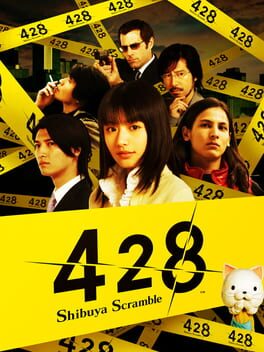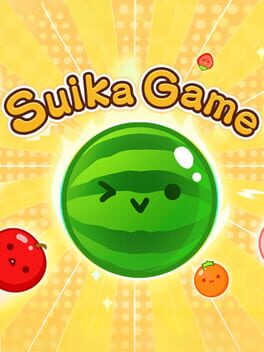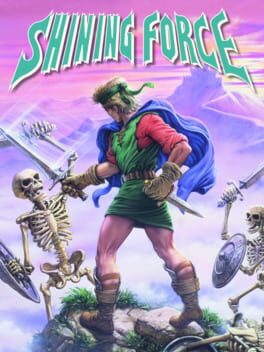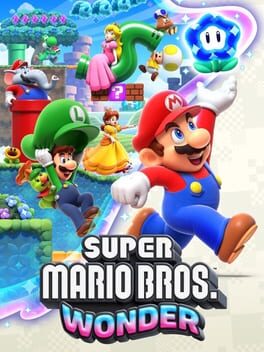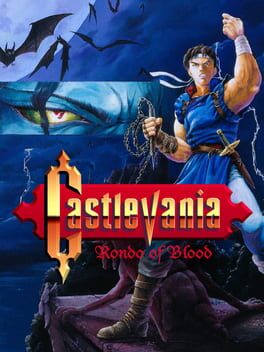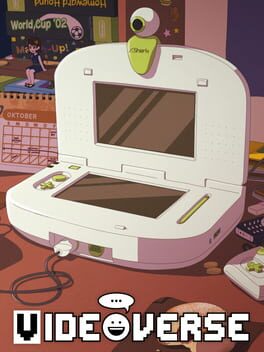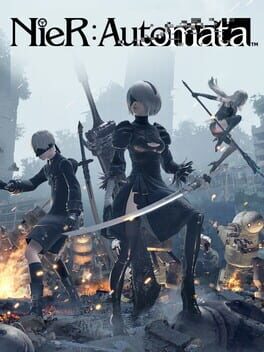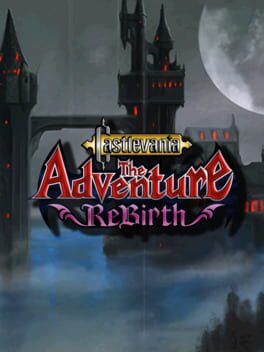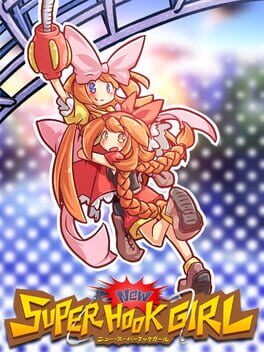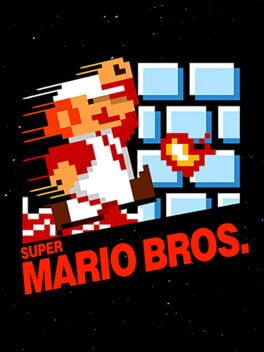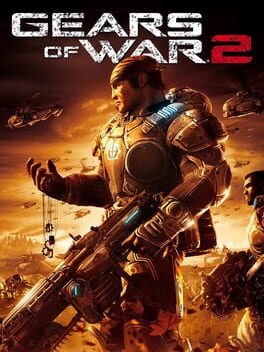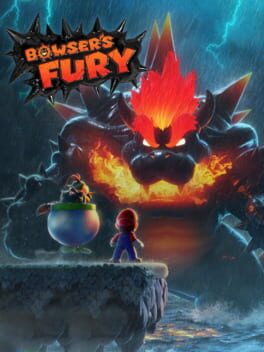ivb
44 Reviews liked by ivb
It is an obvious game about connections, with the stories of the various protagonists being interwoven through diverse means. These connections are also a victory of good faith against evil. While the evil plan in the shadows is responsible for causing havoc always one step ahead of all of Shibuya, the player's power to guide everyone into the best course always prevails.
It is not even a subtle push on the characters as they step into dilemmas, it is a force so powerful that it is capable of making arbitrary decisions that can save the day. This is why the game allows itself to indulge constantly in its comedic tone. Including the bad endings. It is not afraid to paint a catastrophe as a mere joke because it knows the situation can be saved, they are a mere pastime of a daydream, or perhaps a nightmare, that could but never will be.
These connections are also implicit in the plot itself. As the climax is reached, all interpersonal conflicts are eventually ironed out to form a cohesive whole. The game, in the midst of these impossible to avoid threads that take place in Shibuya, allows itself to include a plot with a character isolated, both from the physical outside and from his family, and help him reconnect with his loved ones and the world through gestures as simple as an anonymous message on an online pop singer fan forum or a bodyguard (a buffoon in actual fact) put on assignment who nevertheless genuinely cares about his objective, his friend, beyond duty.
It is strange, but each session felt thoroughly pleasant, watching faces intermingle between stories and laughing, somewhat cruelly but harmlessly at heart, at the crossovers as they did not even suspect the weight that their encounters carried. On occasion, the protagonists are ignorant of why or how a decision or a connection would end one way or the other. Using the shield of humor, what really hides behind is a faith in that the schemes of evil cannot overcome an unexplainable and unstoppable goodness.
It is not even a subtle push on the characters as they step into dilemmas, it is a force so powerful that it is capable of making arbitrary decisions that can save the day. This is why the game allows itself to indulge constantly in its comedic tone. Including the bad endings. It is not afraid to paint a catastrophe as a mere joke because it knows the situation can be saved, they are a mere pastime of a daydream, or perhaps a nightmare, that could but never will be.
These connections are also implicit in the plot itself. As the climax is reached, all interpersonal conflicts are eventually ironed out to form a cohesive whole. The game, in the midst of these impossible to avoid threads that take place in Shibuya, allows itself to include a plot with a character isolated, both from the physical outside and from his family, and help him reconnect with his loved ones and the world through gestures as simple as an anonymous message on an online pop singer fan forum or a bodyguard (a buffoon in actual fact) put on assignment who nevertheless genuinely cares about his objective, his friend, beyond duty.
It is strange, but each session felt thoroughly pleasant, watching faces intermingle between stories and laughing, somewhat cruelly but harmlessly at heart, at the crossovers as they did not even suspect the weight that their encounters carried. On occasion, the protagonists are ignorant of why or how a decision or a connection would end one way or the other. Using the shield of humor, what really hides behind is a faith in that the schemes of evil cannot overcome an unexplainable and unstoppable goodness.
Suika Game
2021
Review under 4000 points (but over 3500, look at that heheh).
Every time you wait patiently for the physics to work only to see flying fruit at the end: https://www.youtube.com/watch?v=lYDzhLOPD3E
Every time you wait patiently for the physics to work only to see flying fruit at the end: https://www.youtube.com/watch?v=lYDzhLOPD3E
Suika Game
2021
Easy to see as an absolute opposite of Tetris (and descendants) by design. The usual squared and stiff pieces here are rounded fruits that will never stop moving, not only after you drop them but as long as anything is moving along on the board. The same can be said about how both types of games manage time. The ever increasing urge to make decisions in Tetris is not explicitly here, you can take all the time in the world to decide every single move, and yet it is a game where time is fundamental. Instead of dropping pieces of fruit fast because the system forces you to, you make the drops fast (or not) because the board can and will go out of control thanks to the living chain reaction of every collision.
It could be argued that by not taking the, by now quite trite, increasing speed pressure, Suika Game isn’t that good at building tension as the game goes on. Yet, the compromise on a spatial and physical game that can never be erased, only temporarily reduced, is enough to make every cherry count until the very end. There is the notable exception of being able to mix together two watermelons consistently, though humanity is still not there to behold such a level of refinement, addiction or both.
It could be argued that by not taking the, by now quite trite, increasing speed pressure, Suika Game isn’t that good at building tension as the game goes on. Yet, the compromise on a spatial and physical game that can never be erased, only temporarily reduced, is enough to make every cherry count until the very end. There is the notable exception of being able to mix together two watermelons consistently, though humanity is still not there to behold such a level of refinement, addiction or both.
Suika Game
2021
Funciona en un equilibrio entre dos mundos.
Un mundo frío y calculado, de gestionar el escaso espacio de la caja, de tomar decisiones constantes sujetas a la siguiente fruta aleatoria a añadir, de planificación y de adaptaciónn ante los imprevistos.
Y un mudo físico, vibrante, de jugueteo en el deslizamiento de las frutas, el roce y la presión entre si, las cerezas saliendo disparadas y el equilibrio inestable de los círculos apelotonados unos sobre otros.
Dos mundos opuestos y complementarios. Cabeza y corazón. Compactado en partidas de 10-20 minutos, siempre distintas, siempre divertidas, tanto para pasar el rato como para strimear delante de miles de personas. Que juegazo tío.
Un mundo frío y calculado, de gestionar el escaso espacio de la caja, de tomar decisiones constantes sujetas a la siguiente fruta aleatoria a añadir, de planificación y de adaptaciónn ante los imprevistos.
Y un mudo físico, vibrante, de jugueteo en el deslizamiento de las frutas, el roce y la presión entre si, las cerezas saliendo disparadas y el equilibrio inestable de los círculos apelotonados unos sobre otros.
Dos mundos opuestos y complementarios. Cabeza y corazón. Compactado en partidas de 10-20 minutos, siempre distintas, siempre divertidas, tanto para pasar el rato como para strimear delante de miles de personas. Que juegazo tío.
Shining Force
1992
Hay algo extraño con esto y es difícil ponerle nombre. Shining in the Darkness ya hacía un gran esfuerzo para, a pesar de no diferenciarse, tomar ciertas convenciones y crear una dinámica con ellas. Lo suficientemente interesante como para crear esa sensación de "una vez y ya".
Esta secuela de apenas un año después se diferencia básicamente por cambiar a otro género y así conservar en parte lo mismo, su identidad visual, pero cambiando el aspecto jugable a otro género, el táctico (¿se estaba volviendo más popular seguramente?). Aún así no se conforma y va más lejos e imita el estilo de FE Gaiden, el cual tenía segmentos de JRPG clásico. Pero, al mismo tiempo, ignora lo que esta saga valora, y Shining Force no desea que haya vínculos entre los personajes de tu propia unidad, o siquiera entre tú y ellos. O tú y tu avatar principal. Por eso no hay permadeath, porque sería totalmente inconsecuente ya hubiera personajes desarrollados entre tus filas o no. Además, matan al rey al principio de la historia sin una razón de mucho peso (eso sí es permadeath), y esa figura tiende a ser emblemática en los JRPGs de los que toman referencias. Una acción como esa, teniendo a su lado toda aquella despersonalización de personajes con los que más vas a verte involucrado (es decir, ¡la Shining Force!)... da la impresión de que el equipo detrás no sabe abordar bien el drama, o un mínimo concepto de pérdida.
La usuaria Marianelalela consideró en un texto suyo que bien podrían categorizarse los videojuegos en función de las emociones que transmiten y no tanto en sus formalizaciones de gameplay. En ese sentido, se queda lejos de transmitir algo y lo poco que hace con sus ingredientes jugables se queda en un germen. Puedes mover las piezas que te dan, pero ahí está el problema principal: que solo puedes hacer eso. Vuelve cualquier proceso de avance, lento, porque tanta despersonalización y ausencia de drama omite cualquier pieza sentimental. No existen y no se pueden mover por tu mente.
Esta secuela de apenas un año después se diferencia básicamente por cambiar a otro género y así conservar en parte lo mismo, su identidad visual, pero cambiando el aspecto jugable a otro género, el táctico (¿se estaba volviendo más popular seguramente?). Aún así no se conforma y va más lejos e imita el estilo de FE Gaiden, el cual tenía segmentos de JRPG clásico. Pero, al mismo tiempo, ignora lo que esta saga valora, y Shining Force no desea que haya vínculos entre los personajes de tu propia unidad, o siquiera entre tú y ellos. O tú y tu avatar principal. Por eso no hay permadeath, porque sería totalmente inconsecuente ya hubiera personajes desarrollados entre tus filas o no. Además, matan al rey al principio de la historia sin una razón de mucho peso (eso sí es permadeath), y esa figura tiende a ser emblemática en los JRPGs de los que toman referencias. Una acción como esa, teniendo a su lado toda aquella despersonalización de personajes con los que más vas a verte involucrado (es decir, ¡la Shining Force!)... da la impresión de que el equipo detrás no sabe abordar bien el drama, o un mínimo concepto de pérdida.
La usuaria Marianelalela consideró en un texto suyo que bien podrían categorizarse los videojuegos en función de las emociones que transmiten y no tanto en sus formalizaciones de gameplay. En ese sentido, se queda lejos de transmitir algo y lo poco que hace con sus ingredientes jugables se queda en un germen. Puedes mover las piezas que te dan, pero ahí está el problema principal: que solo puedes hacer eso. Vuelve cualquier proceso de avance, lento, porque tanta despersonalización y ausencia de drama omite cualquier pieza sentimental. No existen y no se pueden mover por tu mente.
CW: Discussions of Transmisogyny
The common response to vulnerable niche play experiences like Video Game Feminization Hypnosis (2019), Cave Story Sex RPG 2007 (2021), and He Fucked The Girl Out of Me (2022), is mockery both for the boldness of name and of content. Video Game Feminization Hypnosis is a psychic-design-manifesto with lines like "i dont care about the "puzzles" i just wanna explore weird islands & mess with the machines" and "ive half-joked about my games being laced with estrogen but i wonder how powerful they could be. what if we could use video games to forcefem ppl all over the world" nested as hyperlinks throughout her vent towards a better girly gameworld. Written in lowercase text and using internet acronyms like 'ppl', she speaks with a casual concern for unfettered femme exploration games as a way to potentially rewrite the social code.
It has not been product tested for review, nor has either of the other 2 games mentioned. The problem here is that the culture of 'gaming' itself is unable to step beyond the bounds of product review. Franz inquires into this problem around Cave Story Sex RPG 2007
"Why do we seek to quantify something clearly very personal based on how much it resonates with us?
I think my problem is that I think people are looking at this game as they would a product. Like it needs to have some value to me, otherwise it's not "worth playing".
Nadia, Fewprime, Blood Machine, npckc, communistsister, bagenzo, and [pourpetine] (https://xrafstar.monster/games/). These are in my mind the most notable transfemme gamedevs and their relevant store pages for their work¹. It's obviously not a comprehensive list, but this is my notation for who is the most publicly notable and prolific within the scene. Notice that all of the games on these pages are free as are the 3 games I opened with at the start. That's because transfemme gamedevs more often have to make their corpus free just to get eyes. So what are gaming spaces assessing the 'worth' of a completely no strings attached free simulated experiences? I think its the fact we dare to make people uncomfortable and borrowing a modicum of their time (across all the devs I've mentioned I cant think of 1 that takes more than 3 hours to finish, usually only being around 20 minutes in length at most). My sisters have to cheapen themselves to 0 just to get your ear and its still just met with mockery, harassment, and belittlement².
Even when a transfemme game dev gets the chance of any success at all she is thrown down again. In pourpetine's Hot Allostatic Load (2015) she notes among a litany of pained observations that
"One of my abusers was sent a list of the nominees for the upcoming games festival Indiecade. Unfortunately, I was on the list. I ended up winning an award, ostensibly to recognize my feminine labor in the areas of marginalized game design—years of creating access for other people, publicizing their games, giving technical support, not to mention the games I had designed myself. Instead of solidarity from other marginalized people in my field, I was attacked."
Video Game Feminization Hypnosis beats to a much more Utopian drum. A belief that we can mesmerize people into a more pure goo out of this vindictive rut, create a games made out of love, show people feminine Exits.
I believe in all that. I also believe that my words and those of my sisters are constantly being cast a sidelong jeer of disposability. That I and my sisters are then to blame for when a mobbing happens and not the world's own biases and outrage. This world has made this all quite non-negotiable, no more playing along with the democratic cesspits and hateful comedy routines. Here's to reflecting on the play experience others treat as compost as if its the most meaningful urtexts in the world because to quote pourpetine again "Build the shittiest thing possible. Build out of trash because all i have is trash. Trash materials, trash bodies, trash brain syndrome. Build in the gaps between storms of chronic pain." trash art is my queendom.
I hope it suffocates society before it can flee to their patriarch Arks. As princess put it here 'flood the world and dilute the sludge'.
-------------------------------------------------------
1. 2 notable exceptions I know of with pay to play games by transfemme is princess/Girl Software's other games, and the cowriting of Aevee Bee on Worst Girl Games. Also key in on the fact here I'm making no judgements on individual pricing of games as a moral decision.
2. Does not remotely just happen On Backloggd³ if you think this is just a grievance I have with this site you're gravely misreading me and I urge you to slow down your social media outrage use for a bit qt~
3. Although I should not lie, social media sites are remarkably more unreliable habitats for trans people than they initially appear, this place has been a great learning experience of that in my case
The common response to vulnerable niche play experiences like Video Game Feminization Hypnosis (2019), Cave Story Sex RPG 2007 (2021), and He Fucked The Girl Out of Me (2022), is mockery both for the boldness of name and of content. Video Game Feminization Hypnosis is a psychic-design-manifesto with lines like "i dont care about the "puzzles" i just wanna explore weird islands & mess with the machines" and "ive half-joked about my games being laced with estrogen but i wonder how powerful they could be. what if we could use video games to forcefem ppl all over the world" nested as hyperlinks throughout her vent towards a better girly gameworld. Written in lowercase text and using internet acronyms like 'ppl', she speaks with a casual concern for unfettered femme exploration games as a way to potentially rewrite the social code.
It has not been product tested for review, nor has either of the other 2 games mentioned. The problem here is that the culture of 'gaming' itself is unable to step beyond the bounds of product review. Franz inquires into this problem around Cave Story Sex RPG 2007
"Why do we seek to quantify something clearly very personal based on how much it resonates with us?
I think my problem is that I think people are looking at this game as they would a product. Like it needs to have some value to me, otherwise it's not "worth playing".
Nadia, Fewprime, Blood Machine, npckc, communistsister, bagenzo, and [pourpetine] (https://xrafstar.monster/games/). These are in my mind the most notable transfemme gamedevs and their relevant store pages for their work¹. It's obviously not a comprehensive list, but this is my notation for who is the most publicly notable and prolific within the scene. Notice that all of the games on these pages are free as are the 3 games I opened with at the start. That's because transfemme gamedevs more often have to make their corpus free just to get eyes. So what are gaming spaces assessing the 'worth' of a completely no strings attached free simulated experiences? I think its the fact we dare to make people uncomfortable and borrowing a modicum of their time (across all the devs I've mentioned I cant think of 1 that takes more than 3 hours to finish, usually only being around 20 minutes in length at most). My sisters have to cheapen themselves to 0 just to get your ear and its still just met with mockery, harassment, and belittlement².
Even when a transfemme game dev gets the chance of any success at all she is thrown down again. In pourpetine's Hot Allostatic Load (2015) she notes among a litany of pained observations that
"One of my abusers was sent a list of the nominees for the upcoming games festival Indiecade. Unfortunately, I was on the list. I ended up winning an award, ostensibly to recognize my feminine labor in the areas of marginalized game design—years of creating access for other people, publicizing their games, giving technical support, not to mention the games I had designed myself. Instead of solidarity from other marginalized people in my field, I was attacked."
Video Game Feminization Hypnosis beats to a much more Utopian drum. A belief that we can mesmerize people into a more pure goo out of this vindictive rut, create a games made out of love, show people feminine Exits.
I believe in all that. I also believe that my words and those of my sisters are constantly being cast a sidelong jeer of disposability. That I and my sisters are then to blame for when a mobbing happens and not the world's own biases and outrage. This world has made this all quite non-negotiable, no more playing along with the democratic cesspits and hateful comedy routines. Here's to reflecting on the play experience others treat as compost as if its the most meaningful urtexts in the world because to quote pourpetine again "Build the shittiest thing possible. Build out of trash because all i have is trash. Trash materials, trash bodies, trash brain syndrome. Build in the gaps between storms of chronic pain." trash art is my queendom.
I hope it suffocates society before it can flee to their patriarch Arks. As princess put it here 'flood the world and dilute the sludge'.
-------------------------------------------------------
1. 2 notable exceptions I know of with pay to play games by transfemme is princess/Girl Software's other games, and the cowriting of Aevee Bee on Worst Girl Games. Also key in on the fact here I'm making no judgements on individual pricing of games as a moral decision.
2. Does not remotely just happen On Backloggd³ if you think this is just a grievance I have with this site you're gravely misreading me and I urge you to slow down your social media outrage use for a bit qt~
3. Although I should not lie, social media sites are remarkably more unreliable habitats for trans people than they initially appear, this place has been a great learning experience of that in my case
Wonder es el peor Mario de la serie principal desde, no se... Hago memoria y es que ni World, ni los Galaxy, ni Land me parecen tan malos. Los New, que ya eran una versión descafeinada de Mario 3, aun guardaban algo más de interés. El movimiento de Mario se había limado mucho pero seguía manteniendo un mínimo de peso, acelerar guardaba su inercia. En Wonder tenemos el movimiento de Mario más digital de toda la saga. En mi partida escogí a Luigi porque me daba la opción y, no se si habrá alguna diferencia con Mario, pero este no es Luigi. En Mario 2 (J), donde se introdujo por primera vez a Luigi con movimiento propio, el personaje patinaba, aceleraba más rápido y tardaba más en frenar, saltaba más alto y era más incontrolable. Luigi aquí no tiene personalidad. El movimiento de Wonder me recuerda a fangames como Super Mario Flashback. Con cosas así se puede perdonar que el que lo hace no sepa que Mario es su movimiento, porque es un proyecto fan, no tiene las mismas exigencias, etc. Aquí lo preocupante es que son de Nintendo quienes han cometido este ataque a los principios básicos del gordo italiano.
El diseño de niveles no mejora el movimiento. A caba bandera de cierre solo me venía a la cabeza: "no me creo que eso haya sido el nivel". Al poco rato de terminar el juego ya había olvidado la mayoría de ellos. Que cosa más básica, plana, sin fricción. Líneas rectas sin apenas obstáculos o enemigos. Ni siquiera se atreven a combinar más de una idea a la vez, algo básico que solían hacer estos juegos. Algunos bill balas en una sección de autoscroll, un lakitu lanzándote pinchones en una sección de plataformas móviles. Algo, lo que sea. Antes de empezar con Wonder me puse el New de Wii, porque nunca lo había jugado y para recordar el tacto de Mario. Nunca pensé que diría algo así, pero pasar de los niveles de New a estos es un abismo.
Y con los power-ups igual. En el New, uno de los nuevos power-ups que te introducen es el traje de pingüino. Tan ridículo como se ve, hace un uso interesante del movimiento de Mario, que al agacharse en carrera se desliza sobre la panza. La orografía de los niveles en los que te lo daban estaba llena de pendientes, subidas y bajadas, hielo y plataformas. Ninguna genialidad pero el mínimo para hacer disfrutable atravesarlos deslizándote. El primer power-up de Wonder es el elefante. ¿Qué aporta exactamente? ¿Se siente más pesado de controlar? ¿Es más lento o contundente? ¿Puedes, yo que se, balancearte con la trompa? Nada. La ausencia de personalidad del elefante es la misma que la de Luigi o Mario sin transformar. Ah, pero puedes dar trompazos. Enhorabuena, le has añadido un ataque cuerpo a cuerpo a Mario. Menuda revolución.
Lo de las habilidades secundarias ni lo voy a comentar, parecen sacadas de Celeste.
El principal atractivo de Wonder, la wonder-flor, que da un giro a los niveles y les aporta el toque de "locura", decir que es anecdótico sería tenerle demasiada consideración. Si te paras a analizar cada sección alternativa, ¿ofrecen algo más allá de la primera impresión? ¿Repetirías un nivel únicamente para volver a jugar esa sección en la que las tuberías suben y bajan o en la que cambia la perspectiva u otra tontería de usar y tirar? Cualquier nivel de Pizza Tower, el que sea, deja en vergüenza la wonder-flor. El ansia y velocidad con que te incitan a jugar, el ritmo de lanzarte ideas sin mayor introducción, ahora estás hecho de queso, ahora eres una armadura, ahora eres una caja de pizza y vuelas y enseguida entiendes el nuevo movimiento y navegas el nivel de otra forma y de pronto llegas al final y la música cambia y acelera y tienes que correr de vuelta a toda hostia y retrocedes a trompicones y Gustavo te mete prisa y entras en un caos a máxima velocidad... Se siente hasta injusta la comparación con Wonder.
Mario Wonder es una desgracia de juego. Es patético como Mario y una falta de saber hacer y visión preocupante. No es que esperase mucho de la Nintendo actual, pero esto me parece un nuevo nivel de bajeza. En un Mario principal, que es peor. Si fuera un Yoshi, que nadie espera nada de él pues todavía, pero en la saga insignia de Nintendo es triste y, sinceramente, me ha quitado las ganas de probar ningún juego que saque esta compañía en el futuro.
El diseño de niveles no mejora el movimiento. A caba bandera de cierre solo me venía a la cabeza: "no me creo que eso haya sido el nivel". Al poco rato de terminar el juego ya había olvidado la mayoría de ellos. Que cosa más básica, plana, sin fricción. Líneas rectas sin apenas obstáculos o enemigos. Ni siquiera se atreven a combinar más de una idea a la vez, algo básico que solían hacer estos juegos. Algunos bill balas en una sección de autoscroll, un lakitu lanzándote pinchones en una sección de plataformas móviles. Algo, lo que sea. Antes de empezar con Wonder me puse el New de Wii, porque nunca lo había jugado y para recordar el tacto de Mario. Nunca pensé que diría algo así, pero pasar de los niveles de New a estos es un abismo.
Y con los power-ups igual. En el New, uno de los nuevos power-ups que te introducen es el traje de pingüino. Tan ridículo como se ve, hace un uso interesante del movimiento de Mario, que al agacharse en carrera se desliza sobre la panza. La orografía de los niveles en los que te lo daban estaba llena de pendientes, subidas y bajadas, hielo y plataformas. Ninguna genialidad pero el mínimo para hacer disfrutable atravesarlos deslizándote. El primer power-up de Wonder es el elefante. ¿Qué aporta exactamente? ¿Se siente más pesado de controlar? ¿Es más lento o contundente? ¿Puedes, yo que se, balancearte con la trompa? Nada. La ausencia de personalidad del elefante es la misma que la de Luigi o Mario sin transformar. Ah, pero puedes dar trompazos. Enhorabuena, le has añadido un ataque cuerpo a cuerpo a Mario. Menuda revolución.
Lo de las habilidades secundarias ni lo voy a comentar, parecen sacadas de Celeste.
El principal atractivo de Wonder, la wonder-flor, que da un giro a los niveles y les aporta el toque de "locura", decir que es anecdótico sería tenerle demasiada consideración. Si te paras a analizar cada sección alternativa, ¿ofrecen algo más allá de la primera impresión? ¿Repetirías un nivel únicamente para volver a jugar esa sección en la que las tuberías suben y bajan o en la que cambia la perspectiva u otra tontería de usar y tirar? Cualquier nivel de Pizza Tower, el que sea, deja en vergüenza la wonder-flor. El ansia y velocidad con que te incitan a jugar, el ritmo de lanzarte ideas sin mayor introducción, ahora estás hecho de queso, ahora eres una armadura, ahora eres una caja de pizza y vuelas y enseguida entiendes el nuevo movimiento y navegas el nivel de otra forma y de pronto llegas al final y la música cambia y acelera y tienes que correr de vuelta a toda hostia y retrocedes a trompicones y Gustavo te mete prisa y entras en un caos a máxima velocidad... Se siente hasta injusta la comparación con Wonder.
Mario Wonder es una desgracia de juego. Es patético como Mario y una falta de saber hacer y visión preocupante. No es que esperase mucho de la Nintendo actual, pero esto me parece un nuevo nivel de bajeza. En un Mario principal, que es peor. Si fuera un Yoshi, que nadie espera nada de él pues todavía, pero en la saga insignia de Nintendo es triste y, sinceramente, me ha quitado las ganas de probar ningún juego que saque esta compañía en el futuro.
Following Castlevania tradition as in: focusing on platforming sections that never work, filling the screen with so many enemies that the game bleeds in lag or having bosses that throw their patterns oblivious of you (Dracula) sucks. Following Castlevania tradition as in following its mythology/iconography: the Belmont who goes to face Dracula and his monsters in his own castle, with the staircase before the final battle or the castle getting destroyed in the horizon at the end, rules just as much as the many reinterpretations of the original Dracula tale itself.
True, this game has some of the Castlevania junk mentioned before, the good idea of the alternative paths is not that good when most of the times the optional routes are kind of bad and the idea of having Maria as a playable character could be a fun joke, but getting unlocked so soon is a risk to ruin a whole playthrough. Fortunately, this reinterpretation of Castlevania manages to stay focused enough on its combat, specifically a combat of distance and space.
Usually Castlevania games fail to maintain a 1 to 1 tension between the player and the various hazards. Either the games are in a moment where everything is easy enough to carelessly press forward or you are trapped in knockback and pattern hells relying more on precision and memory to survive. In Rondo, not few enemies will react to where you are at, try to take up your space or punish you for entering their zone, adapt a block stance, even some of the projectile elements like the medussas are a nice counterpart to your objects. The highlight of this is seen in bosses, where every safe reaction to one of their patterns puts you in a stance where they can throw an attack that is specially vulnerable for you at the moment, a constant reaction of both sides, never standing still, the boss health bar mirroring yours almost makes it look like a fighting game at moments. The best thing is that the climax of these fights could not be other than the boss throwing a last desperate attack when its health is already gone, what a more sincere way to show honor to your opponent than to bid farewell with a last punch?
True, this game has some of the Castlevania junk mentioned before, the good idea of the alternative paths is not that good when most of the times the optional routes are kind of bad and the idea of having Maria as a playable character could be a fun joke, but getting unlocked so soon is a risk to ruin a whole playthrough. Fortunately, this reinterpretation of Castlevania manages to stay focused enough on its combat, specifically a combat of distance and space.
Usually Castlevania games fail to maintain a 1 to 1 tension between the player and the various hazards. Either the games are in a moment where everything is easy enough to carelessly press forward or you are trapped in knockback and pattern hells relying more on precision and memory to survive. In Rondo, not few enemies will react to where you are at, try to take up your space or punish you for entering their zone, adapt a block stance, even some of the projectile elements like the medussas are a nice counterpart to your objects. The highlight of this is seen in bosses, where every safe reaction to one of their patterns puts you in a stance where they can throw an attack that is specially vulnerable for you at the moment, a constant reaction of both sides, never standing still, the boss health bar mirroring yours almost makes it look like a fighting game at moments. The best thing is that the climax of these fights could not be other than the boss throwing a last desperate attack when its health is already gone, what a more sincere way to show honor to your opponent than to bid farewell with a last punch?
Videoverse
2023
A conglomeration of impossible nostalgias: Nintendo DS tactile device, messenger chats, barely functional webcams, two colored pixelated games and UI, fan art forums, 2000s trends posters… Videoverse basically takes whatever is convenient from each place while giving a kind of immortal internet nostalgia, where seeing the face of someone from another country in a laggy exchange is a kind of magical event, both in its unimaginable existence just a few decades ago and in its low fidelity technological mystique. This blurry yet distinct mass also carries a meaning of both the degree of precision at recalling our memories and how videogames work better with few charismatic gestures, scarce and giant pixels changing the face expression to tell absolutely everything.
In this virtual reality, completely opening yourself is both the only possible and most risky place to do so. Everything is volatile, logging off is erasing your existence and the servers shutting down is the end of the world on top of your desk. As messy as it may be, Videoverse is undeniably a home. The more times you log in, the more those nicknames become your neighbors. For a teenager still figuring out the world, it is as easy to assimilate as reality.
In this place where it is technically impossible to tell apart true from false, love is still the biggest unexplainable truth.
https://www.youtube.com/watch?v=wcKsxHURj24
In this virtual reality, completely opening yourself is both the only possible and most risky place to do so. Everything is volatile, logging off is erasing your existence and the servers shutting down is the end of the world on top of your desk. As messy as it may be, Videoverse is undeniably a home. The more times you log in, the more those nicknames become your neighbors. For a teenager still figuring out the world, it is as easy to assimilate as reality.
In this place where it is technically impossible to tell apart true from false, love is still the biggest unexplainable truth.
https://www.youtube.com/watch?v=wcKsxHURj24
NieR: Automata
2017
Dismembering bodies, dismembering reality.
What i liked most from the first Nier was Taro's ability to play with what constitutes a being, and how bodies are transformed several times taking different forms. He has the ability to twist his stories and his characters, so that the confusion that arises from all the endings and new perspectives is not only to show the futility of conflict, but that the real conflict is upon our own bodies.
Nier Automata takes it even further. The only bodies that remain in the world are machine lifeforms. They can be replaced with spareparts, the androids are different from alien machines, but machines can fuse and give birth to androids, and androids are formed with machines' nucleus, and then everyone fights each other, while searching for a human soul.
They build community, they are greedy, they need connection, they need love, they need solitude. They feel. And their bodies keep twisting and turning and breaking and reconstructing and deconstructing and nothing remains the same anymore, because our bodies are in constant death and rebirth as time passes, and we meet new people and they change us and we change them in return. Such is the pain and grace of living.
What i liked most from the first Nier was Taro's ability to play with what constitutes a being, and how bodies are transformed several times taking different forms. He has the ability to twist his stories and his characters, so that the confusion that arises from all the endings and new perspectives is not only to show the futility of conflict, but that the real conflict is upon our own bodies.
Nier Automata takes it even further. The only bodies that remain in the world are machine lifeforms. They can be replaced with spareparts, the androids are different from alien machines, but machines can fuse and give birth to androids, and androids are formed with machines' nucleus, and then everyone fights each other, while searching for a human soul.
They build community, they are greedy, they need connection, they need love, they need solitude. They feel. And their bodies keep twisting and turning and breaking and reconstructing and deconstructing and nothing remains the same anymore, because our bodies are in constant death and rebirth as time passes, and we meet new people and they change us and we change them in return. Such is the pain and grace of living.
La gente en Internet: pufffff qué estancada está la industria del videojuego sagas recicladas no se que
Yo descubriendo el quincuagésimo sexto videojuego cuya existencia desconocía de la saga de los vampiritos de los cojones en el que la penúltima fase es una torre del reloj en la que te pegas con la muerte y al final Drácula tiene tres frases de las cuales las dos primeras literalmente son las mismas que las de otros juegos: https://imgur.com/21hgtRS
Yo descubriendo el quincuagésimo sexto videojuego cuya existencia desconocía de la saga de los vampiritos de los cojones en el que la penúltima fase es una torre del reloj en la que te pegas con la muerte y al final Drácula tiene tres frases de las cuales las dos primeras literalmente son las mismas que las de otros juegos: https://imgur.com/21hgtRS
New Super Hook Girl
2016
Super Mario Bros.
1985
I made a video about this game for the 35th anniversary (it's on Spanish, but you can see English subtitles): https://youtu.be/8rqiakCOatU
---------------------------------------------------------------------------------
The importance of the original Super Mario Bros. can't be understated: It doesn't have to do with being a genre pioneer, since games like Jump Bug, Pitfall or Pac-Land already included the jump mechanic, and the Mario franchise already had two games behind its back: Donkey Kong and Mario Bros. It isn't about being the sidescrolling game either, since Pac-Land's and Jump Bug's also scrolled their screens alongside the player, and a few days after the original Super Mario we had Makaimura on the arcades, which also included the jump mechanic alongside a screen that followed the player. What differentiates Super Mario Bros. from its predecessors is the creation of a world surrounding a mechanic, specifically the jump.
Shigeru Miyamoto's focus is the direct perception of the interactive premise for the player's immersion, and for that purpose there is particular care to the tangible effect of the environments. In simpler terms, that you can perceive the worlds physically. The key element is the depth in the aerial maneuverability. Super Mario Bros. allows a detailed control of the avatar while moving in the air. The weight of gravity in the impulse, the inertia in the jump direction in opposition to the player's command, and the feeling to confront the game's physical laws. To redirect the path of the avatar the stronger one presses the button. Such capability gives the aerial space to take relevance in the gameplay, since it's how the player decides their position, and thus the player becomes conscious of its position at any moment.
To give purpose to these controls, the game turns jumping in the main form of interacting with the environment. Obstacles can be avoided through jumping, similarly to Pac-Land, which was Super Mario Bros.'s main inspiration, but enemies can be defeated if we step on them, and that becomes a step forward by adding variables that react to our presence. The other form of including the jump in the gameplay is to hit blocks. Some of them contain coins that allow an additional chance to continue if you collect hundred of them, others contain upgrades to take a hit, being able to attack at distance, or time-limited invincibility. Some of them contain extra lives, others can be broken to make a path, or even allow access to other areas. The content of the blocks isn't immediately obvious since its appearance doesn't follow a pattern. They can be signaled, they can appear as another type of block and they can even be invisible. Basically, they're a secret, and this gives the game the sense of hiding more than what it appears to have, since it's optional content.
The intention of a world with a hidden face is manifested through pipes that lead to underground (or even underwater) passages, or vines that climb up to a world hidden in the sky. Even passages outside of the conventional interface of the game. That's why the decision of verticality as an abstraction of depth takes paramount importance to build places far from the surface, from what we know at first sight, and the focus on the vertical jump becomes thus a coherent decision since those are places that aren't reachable by just jumping, and they're hidden to our virtual body.
Because of how important it is to the progress of the player alongside its integration with the main mechanic of the game, the presence of a hidden world becomes an omnipresent feeling that differentiates Super Mario Bros. from other platformers that came after due to its influence, even among its own successors, because it means that the player perceives, decides its progress and leaves its presence in the world through jumping. Miyamoto turned thus this mechanic as a vehicle to expand the possibilities of exploration and personal body expression in a way that thirty-five years later still remains radical.
There's a last design decision that is very special and I haven't covered yet, and it is not being able to turn back. It isn't due to technical limitations since many of the previously mentioned games allowed it. Not being able to turn back is a deliberate decision because it makes the player potentially miss content that they won't be able to get if they didn't know about it, and that resonates to a surprisingly more profound level: The possibility to have missed something, to not have visited a place in a journey, to have taken something for granted at a certain point in time, because there's no coming back. By appealing to this sensation, the game's world takes presence in the player's mind even after having left an area behind, or even the whole game, because there's the lingering feeling of everything we didn't know and everything that could have helped us. That feeling is absent in the Mario games that came to the west after this one, which gives the original an unique quality. It's this sentiment that immortalizes Shigeru Miyamoto's masterpiece beyond what it meant back in the 80s in front of its predecessors, and it still represents the promise of videogames of worlds that can still capture our imaginations and warp our minds to them.
---------------------------------------------------------------------------------
The importance of the original Super Mario Bros. can't be understated: It doesn't have to do with being a genre pioneer, since games like Jump Bug, Pitfall or Pac-Land already included the jump mechanic, and the Mario franchise already had two games behind its back: Donkey Kong and Mario Bros. It isn't about being the sidescrolling game either, since Pac-Land's and Jump Bug's also scrolled their screens alongside the player, and a few days after the original Super Mario we had Makaimura on the arcades, which also included the jump mechanic alongside a screen that followed the player. What differentiates Super Mario Bros. from its predecessors is the creation of a world surrounding a mechanic, specifically the jump.
Shigeru Miyamoto's focus is the direct perception of the interactive premise for the player's immersion, and for that purpose there is particular care to the tangible effect of the environments. In simpler terms, that you can perceive the worlds physically. The key element is the depth in the aerial maneuverability. Super Mario Bros. allows a detailed control of the avatar while moving in the air. The weight of gravity in the impulse, the inertia in the jump direction in opposition to the player's command, and the feeling to confront the game's physical laws. To redirect the path of the avatar the stronger one presses the button. Such capability gives the aerial space to take relevance in the gameplay, since it's how the player decides their position, and thus the player becomes conscious of its position at any moment.
To give purpose to these controls, the game turns jumping in the main form of interacting with the environment. Obstacles can be avoided through jumping, similarly to Pac-Land, which was Super Mario Bros.'s main inspiration, but enemies can be defeated if we step on them, and that becomes a step forward by adding variables that react to our presence. The other form of including the jump in the gameplay is to hit blocks. Some of them contain coins that allow an additional chance to continue if you collect hundred of them, others contain upgrades to take a hit, being able to attack at distance, or time-limited invincibility. Some of them contain extra lives, others can be broken to make a path, or even allow access to other areas. The content of the blocks isn't immediately obvious since its appearance doesn't follow a pattern. They can be signaled, they can appear as another type of block and they can even be invisible. Basically, they're a secret, and this gives the game the sense of hiding more than what it appears to have, since it's optional content.
The intention of a world with a hidden face is manifested through pipes that lead to underground (or even underwater) passages, or vines that climb up to a world hidden in the sky. Even passages outside of the conventional interface of the game. That's why the decision of verticality as an abstraction of depth takes paramount importance to build places far from the surface, from what we know at first sight, and the focus on the vertical jump becomes thus a coherent decision since those are places that aren't reachable by just jumping, and they're hidden to our virtual body.
Because of how important it is to the progress of the player alongside its integration with the main mechanic of the game, the presence of a hidden world becomes an omnipresent feeling that differentiates Super Mario Bros. from other platformers that came after due to its influence, even among its own successors, because it means that the player perceives, decides its progress and leaves its presence in the world through jumping. Miyamoto turned thus this mechanic as a vehicle to expand the possibilities of exploration and personal body expression in a way that thirty-five years later still remains radical.
There's a last design decision that is very special and I haven't covered yet, and it is not being able to turn back. It isn't due to technical limitations since many of the previously mentioned games allowed it. Not being able to turn back is a deliberate decision because it makes the player potentially miss content that they won't be able to get if they didn't know about it, and that resonates to a surprisingly more profound level: The possibility to have missed something, to not have visited a place in a journey, to have taken something for granted at a certain point in time, because there's no coming back. By appealing to this sensation, the game's world takes presence in the player's mind even after having left an area behind, or even the whole game, because there's the lingering feeling of everything we didn't know and everything that could have helped us. That feeling is absent in the Mario games that came to the west after this one, which gives the original an unique quality. It's this sentiment that immortalizes Shigeru Miyamoto's masterpiece beyond what it meant back in the 80s in front of its predecessors, and it still represents the promise of videogames of worlds that can still capture our imaginations and warp our minds to them.
Gears of War 2
2008
Ayer fue el aniversario de esta saga. Ya más de 15 años van desde que Gears of War estandarizó como sería el shooter AAA en los siguientes años hasta la actualidad. Cuánto tiempo y cuan poco se aprendió. El concepto de shooter de coberturas no podría sonar más aburrido. Cubrirse, asomarse, disparar hasta que la pantalla se vuelva roja, esconderse y cuando la pantalla se limpie volvera disparar. Esto es lo mal entendido, creer que eso es lo que hace interesante al combate de Gears. Cuando lo que en realidad lo hace interesante es la variedad. El juego está separado en actos, cada uno con una temática única y donde la visión del juego por convertir cada escenario en un posible campo de batalla se hace relucir. En el primero la dinámica estaba buena porque avanzabas entre coberturas con el objetivo de lanzar una granada al nido de Locust, evitando que sigan respawneando. Pero es un concepto que se repetía demasiado y llegaba a perder la gracia. En esta secuela tenemos settings como por ejemplo un pueblo abandonado, que se convierte en un lugar del que estar atento, alerta de "perros" bomba que corren hacia nosotros para inmolarse. Estar dentro de un monstruo gigante, donde cortamos sus arterias y peleamos contra enemigos mientras la sangre inunda su interior. Instalaciones antiguas, con sus sistemas de seguridad todavía funcionando y cuando el juego toma un ritmo más calmado, intentando ir por un lado más tenso. Así a cada rato. Gears of War 2 no para, aún manteniendo siempre su simple mecánica de disparos, de crear situaciones variadas una atrás de otra. Y aún así, he de añadir que el juego se da la maña para darle la vuelta a conceptos a los que llevamos años acostumbrados. Ya el diseño tan bueno de los Locust, cabezones para incentivar los headshots, es genial. Pero conceptos como dejar las armas descargadas apropósito hasta que llegue el combate para aprovechar el bonus de daño temporal es algo que no se ve a menudo.
Igual las cosas como son, el juego no hace todo perfecto. Al igual que otras "montañas rusas" de acción, como me gusta llamarlas, tiene sus set pieces que directamente no calan conmigo. Generalmente las secciones de torreta o las de pelear contra un monstruo gigante.
La historia del juego es una pelotudez inmensa, no da para mucho más, pero lo que sí que rescato es el carisma y dinámicas de todos sus personajes. Me sorprende cuanto corazón hay en estas bolas de testosterona. Con el respeto que se tratan entre ellos entre tantos insultos y chistes es algo que me gusta mucho. La muerte de algunos personajes, especialmente uno del que ni siquiera vemos la cara, está llevada con una veneración muy particular, algo poco común en lo que esperarías de un juego así. Yo pensaba que Marcus soltaría un "Mierda" y seguirían con su misión como si nada. Pero el juego se toma su tiempo para que veas que a Marcus, siendo alguien que pasó por muchas cosas, perder a un compañero le duele.
Antes de terminar la review quiero dejarlos con una cosa del juego que me encantó. Hay un momento en el que estas en una cueva y encontras un gusano gigante que es inmortal. Si son avispados ya saben por donde va la cosa, pero el uso que le da el juego a ese gusano me pareció una cosa brillante.
Igual las cosas como son, el juego no hace todo perfecto. Al igual que otras "montañas rusas" de acción, como me gusta llamarlas, tiene sus set pieces que directamente no calan conmigo. Generalmente las secciones de torreta o las de pelear contra un monstruo gigante.
La historia del juego es una pelotudez inmensa, no da para mucho más, pero lo que sí que rescato es el carisma y dinámicas de todos sus personajes. Me sorprende cuanto corazón hay en estas bolas de testosterona. Con el respeto que se tratan entre ellos entre tantos insultos y chistes es algo que me gusta mucho. La muerte de algunos personajes, especialmente uno del que ni siquiera vemos la cara, está llevada con una veneración muy particular, algo poco común en lo que esperarías de un juego así. Yo pensaba que Marcus soltaría un "Mierda" y seguirían con su misión como si nada. Pero el juego se toma su tiempo para que veas que a Marcus, siendo alguien que pasó por muchas cosas, perder a un compañero le duele.
Antes de terminar la review quiero dejarlos con una cosa del juego que me encantó. Hay un momento en el que estas en una cueva y encontras un gusano gigante que es inmortal. Si son avispados ya saben por donde va la cosa, pero el uso que le da el juego a ese gusano me pareció una cosa brillante.
Bowser's Fury
2021
Bowser’s Fury shares with 3d Land and 3d World (and the 2d Marios) its approach to platforming-based level design: no more seemingly real but totally unfeasible locations, instead every island (or bunch of islands) in the vast ocean is its own level, and close islands share themes. Of course these islands, in classic Nintendo fashion, are not all accessible since the beginning and instead you unlock chunks of the map after fighting Bowser, which requires the player to collect X Shines, creating a gameplay loop similar to Odyssey. This, though, is not the only similarity between both games: they are way more fun if you play them in “unintended” ways, using Mario’s moveset or alternative powerups (or captures) to your advantage, which by the way is not always possible thanks to some gimmicks and requirements.
While Odyssey was more focused on exploration and interaction than actual platforming here there’s only the latter, and it’s quite bland and inoffensive. The world in Bowser’s Fury is mostly empty and navigating between islands is really uninteresting, so the fact that level design mostly relies on repeating the same really short, easy challenges with slight variations is pretty underwhelming. To the uninteresting level design with really scarce threats you have to add the new inventory system, whichs lets you collect as many powerups as you want and use them conveniently, anytime anywhere. This is the reason why the levels involving helicopter blocks (which is not a powerup like in the New Super Mario Bros series) and keys that you have to bring to the beginning of the level, making you traverse it backwards, are by far the most fun in the game. Holding objects ignores active powerups and limits Mario's movement to the basic running and jumping, making the level design way more challenging and expressive, plus flying with the helicopter block across vertical levels with floating buildings, moving platforms and aerial threats is honestly one of the best times I've had with any modern Mario game.
The thing that was supposed to bring everything together and add some spice is the black, giant Bowser who will periodically wake up from his sleep and attack Mario, but instead of surprising you and forcing you to improvise there’s a clear procedure to this whole thing. When he’s about to appear the music changes, the sky turns black and it starts raining. And it happens so often that it turns into a routine. Bowser will jump from one place to the other and throw flames at you while rocks fall from the sky so that you cannot just hide in one spot and wait for him to leave, but after a couple of cycles he will disappear and you can just resume whatever you were doing. In addition, there are blocks with Bowser’s face all over the world hiding Shines (most of the time) and he is the only one who can destroy them, worsening the already washed out encounters and becoming more of a tool than an actual threat. Transforming into the giant Cat Mario and fighting Bowser in order to progress is quite anecdotic and not much different than the usual Mario boss fight: they're bad. I still believe this was a good idea and the variation it brings to your approach of the levels is more than welcome, but it definitely was not the right approach.
To be fair, it's not that I didn't enjoy my time with the game. Everyone knows that jumping is by far the best mechanic in videogames and no one does it better than Mario. But I wish the game was more than the old Mario drowned into a bunch of mechanics and ideas that don't work together nor by themselves.
While Odyssey was more focused on exploration and interaction than actual platforming here there’s only the latter, and it’s quite bland and inoffensive. The world in Bowser’s Fury is mostly empty and navigating between islands is really uninteresting, so the fact that level design mostly relies on repeating the same really short, easy challenges with slight variations is pretty underwhelming. To the uninteresting level design with really scarce threats you have to add the new inventory system, whichs lets you collect as many powerups as you want and use them conveniently, anytime anywhere. This is the reason why the levels involving helicopter blocks (which is not a powerup like in the New Super Mario Bros series) and keys that you have to bring to the beginning of the level, making you traverse it backwards, are by far the most fun in the game. Holding objects ignores active powerups and limits Mario's movement to the basic running and jumping, making the level design way more challenging and expressive, plus flying with the helicopter block across vertical levels with floating buildings, moving platforms and aerial threats is honestly one of the best times I've had with any modern Mario game.
The thing that was supposed to bring everything together and add some spice is the black, giant Bowser who will periodically wake up from his sleep and attack Mario, but instead of surprising you and forcing you to improvise there’s a clear procedure to this whole thing. When he’s about to appear the music changes, the sky turns black and it starts raining. And it happens so often that it turns into a routine. Bowser will jump from one place to the other and throw flames at you while rocks fall from the sky so that you cannot just hide in one spot and wait for him to leave, but after a couple of cycles he will disappear and you can just resume whatever you were doing. In addition, there are blocks with Bowser’s face all over the world hiding Shines (most of the time) and he is the only one who can destroy them, worsening the already washed out encounters and becoming more of a tool than an actual threat. Transforming into the giant Cat Mario and fighting Bowser in order to progress is quite anecdotic and not much different than the usual Mario boss fight: they're bad. I still believe this was a good idea and the variation it brings to your approach of the levels is more than welcome, but it definitely was not the right approach.
To be fair, it's not that I didn't enjoy my time with the game. Everyone knows that jumping is by far the best mechanic in videogames and no one does it better than Mario. But I wish the game was more than the old Mario drowned into a bunch of mechanics and ideas that don't work together nor by themselves.
